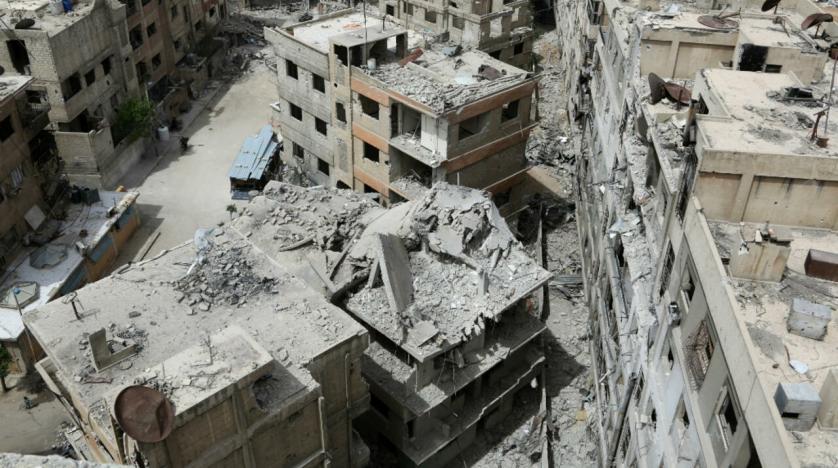A “secret” Jordanian document has proposed a new approach to dealing with the Syrian regime. The document puts in place steps that aim to achieve a gradual change in behavior by the regime, leading up to the withdrawal of all foreign forces from the war-torn country and recognizing the “legitimate interests” of Russia there.
A senior western official, who read the document, confirmed that it was discussed between Arab leaders, including Jordan’s King Abdullah II, who tackled it with US President Joe Biden in Washington in July and Russian President Vladimir Putin in August.
The official told Asharq Al-Awsat that Jordan was encouraged to pursue its efforts in Syria after it received support from Washington over the extension of gas pipelines through Syria, Egypt, and its territories to Lebanon. It also received pledges that it will not come under sanctions in line with Caesar Act for working with Damascus.
Russia, meanwhile, exerted efforts to reach the recent settlement in the southern Syrian province of Daraa. The deal made sure that civilians would not seek asylum in Jordan and that Iran would not expand its influence in Daraa. In return, Jordan would reopen the border with Syria and officials would exchange visits to hold military, security, and economic talks.
Last week, on the sidelines of the United Nations General Assembly, Syrian Foreign Minister Faisal al-Mekdad held talks with his Egyptian, Jordanian and Tunisian counterparts. In contrast, the Syrian opposition practically held no meetings in New York.
On the Arab scene, the consensus remains elusive over Damascus’ return to the Arab League. Its membership was suspended in 2012 in wake of the uprising and the regime’s violent crackdown on peaceful protesters. Arab countries are hinging Syria’s return on Damascus taking tangible steps in implementing the political solution in line with UN Security Council resolution 2254 and ensuring the withdrawal of foreign militias from its territories.
Multiple failures
The western official said the secret document stemmed from an assessment that the approach towards ending the Syrian conflict that was adopted in the past ten years has been a failure on all levels. As it stands, some 6.7 Syrians have fled their homes, 6.6 million are displaced and 13 million require humanitarian aid and 80 percent of the population lives in poverty.
As for ISIS, it may have been defeated in March 2019, but the terrorist group may still regroup in various Syrian regions, including the desert (Badia) and southeastern region that borders Jordan.
The official revealed that the secret document also addresses Iran’s presence in Syria. It concluded that Tehran “enjoys growing military and economic influence over the regime and different regions in the country, especially the southwest”, where drugs smuggling – the main source of income for its militias – is rampant, posing a threat to the region and beyond.
New approach
Based on the above, the document proposes a new approach that could refocus attention on the political solution in Syria based on resolution 2254 and addressing the humanitarian crisis and its security impact on the country and the region. The approach would adopt a series of accumulative steps that would focus on “combating terrorism and containing Iran’s growing influence” with the ultimate goal being changing the behavior of the regime. In return, Damascus would be offered incentives that would reflect positively on the Syrian people and allow the return of refugees and the displaced, revealed the official.
These ideas align with those proposed by UN envoy Geir Pedersen, who had suggested a “step-for-step” approach towards Syria that would start with an American-Russian understanding that would identify these steps. These steps would then be backed by the region, Arab world, and Europe before a mechanism is put in place for the regime to be implemented.
Read Also: Syria and Jordan Resume Freight and Travel Through Border Crossing
The western official said garnering Russia’s support for the new approach was fundamental, as was recognizing Moscow’s legitimate interests. There are hopes that cooperation could take place with Russia to determine the common points of interest so that efforts can move ahead towards the political solution and implementing resolution 2254.
Roadmap
Among the obstacles hindering the new approach is the division over how the regime would be involved. Another obstacle is the lack of Arab consensus over Syria’s return to the Arab League and the lack of progress in the political solution based on resolution 2254. Another hurdle is the US and Europe’s commitment to pressure tools against Damascus: sanctions, isolation, and funding the reconstruction. The Caesar Act is yet another obstacle.
To address some of these hurdles, it was suggested that Jordan test the waters with Damascus before expanding contacts with the regime. Experts have, therefore, sought to draft an “executive roadmap” over how to achieve the “step-for-step” approach that would cover the abovementioned files and the necessary stance from Damascus over “changing the behavior of the regime”, the peace process, resolution 2254, the Constitutional Committee, Iran’s role and return of refugees.
A top priority at the moment appears the demand for “all non-Syrian forces to withdraw from the contact lines” and then the eventual pullout from the country of all foreign forces that deployed there after 2011. In return, American forces would withdraw from Syria and dismantle the al-Tanf base on the Syrian-Jordanian-Iraqi border, and channels of coordination would be opened between the Syrian army and security forces with their counterparts from neighboring countries to control border security.
The document did not include a timetable for its execution. It also did not include a stance on the Russian military presence in Syria even though it did recognize Moscow’s interests. It also did not address Damascus’ stance that the deployment of Iranian militias was based on its request, noted the western official.
This article was edited by The Syrian Observer. The Syrian Observer has not verified the content of this story. Responsibility for the information and views set out in this article lies entirely with the author.


